8:00pm • $20 Tickets on and at the door, if still available
• Mark Wenner
McKinley James is equal parts old soul and modern man. Armed with an electric guitar and sharp songwriting chops, he breathes new life into classic sounds with Working Class Blues, a debut album that introduces his mix of American rock & roll, amplified soul, and raw rhythm & blues.
It's a sound powered by groove and guitar. A sound that's been sharpened by countless shows — from dive bar residences in Nashville to headlining gigs across Europe — and rooted in the shared bloodline of McKinley and his longtime bandmate: father Jason Smay. Together, they rewrite the rulebook for blues-inspired rock duos, creating a lean, honest version of American roots music that makes room for everything from Motown hooks to roadhouse boogie-woogie.
"We're not trying to sound old-school," says McKinley, who grew up watching his father play drums for acts like Los Straitjackets and JD McPherson. "We love traditional blues and soul, but this isn't a retro act. The topics, themes, and songs are always fresh."
To capture those songs as genuinely as possible, McKinley and Jason spent a three-day weekend in the home studio they'd constructed inside their family barn, recording a series of live performances with analog gear and minimal microphones. Jason played a vintage Ludwig drum set from 1970. McKinley played a vintage '54 Stratocaster through a Peavey Pacer. Without headphones or any studio gimmicks, the two performed together in real time, locking into the swaggering shuffle of songs like "Movin'" and "Call Me Lonesome," the singalong melodies of "Always On My Mind," and the bare-boned blues of "Get To My Baby."
"We'd already been playing those songs live," McKinley explains, "so it felt easy to just hit record and do what we always do at our shows. When your band is only two people, there's no hiding. It keeps you honest, and that was the goal with this album, too — to be as honest as possible about who we are and what we do."
That goal began taking shape in upstate New York, where McKinley was raised in a household filled with music. Inspired by everything from Stax to disco to '80s R&B, he became a guitar prodigy at a young age. "I showed him an old video of Booker T. & the M.G.'s playing Norway in 1967," Jason remembers, "and McKinley saw Steve Cropper totally ripping it and thought, 'Ok, that's what I want to do, too.' He must've been 10 years old." McKinley quickly learned not only to play guitar, but to sing and write his own material, too. Along the way, Jason pushed him to expand his horizons.
"Dad always said, 'If you play guitar but don't sing, it will limit you,'" McKinley says. "Learning to sing helped me get into songwriting, and Dad pushed me there, too. He thought it was cool that I liked this older style of music, but I needed to make it my own. You've gotta write songs about who you are. You've gotta live it; otherwise, it just becomes an act."
By the time McKinley relocated to Nashville as a teenager in 2017, he'd already appeared on the cover of Eric Church's platinum-selling album Mr. Misunderstood and kickstarted his performance career. He even missed his own high-school graduation for a gig. During the years that followed, he introduced himself to international audiences by hitting the road — where he initially performed as a trio, backed by Jason and a Hammond organist — and releasing a handful of recordings. 2021's critically-acclaimed Still Standing By found him working alongside producer Dan Auerbach of the Grammy-winning band The Black Keys, while 2022's LIVE! captured McKinley and company onstage, tearing their way through songs like "Love Can Make a Fool" for a full house. When the band's B3 player left the lineup in November 2022, McKinley and Jason moved ahead as a duo — a move that highlights the family chemistry and charisma at the beating heart of Working Class Blues.
This isn't a boxed-in version of the blues. It's an eclectic mix of American music, featuring songs co-written with Auerbach, Pat McLaughlin, and Dylan Altman. McKinley sings about universal struggles — heartbreak, frustration, love, infatuation — with the voice of a 20something adult who's been cutting his teeth onstage since childhood. Like its creator, Working Class Blues exists somewhere out of time, blending the contemporary with the classic, erasing the lines between genre and generation. It's something fresh, created out of something familiar. And for McKinley James, it's just the beginning.

 301.263.6982
301.263.6982




 Service Areas
Service Areas























